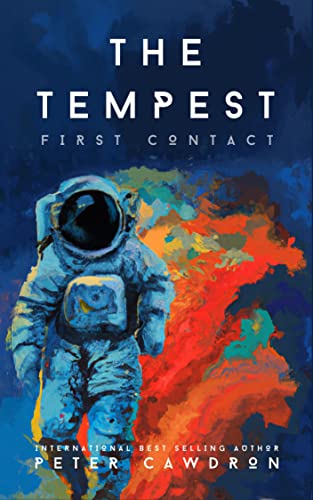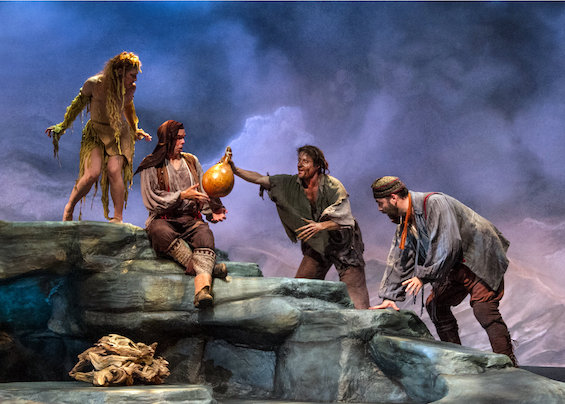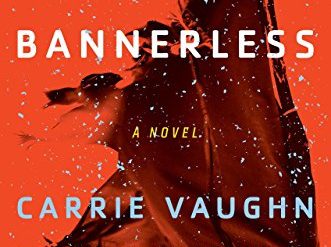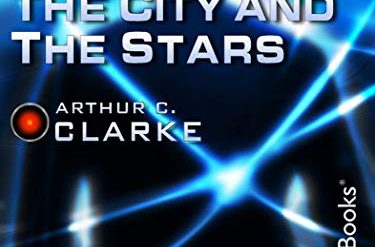
At what point does hard science fiction cross the line into fantasy? Read the work of any of the field’s most revered practitioners—Arthur C. Clarke is the most prominent among them—and you’ll see that any story which ventures into the far reaches of advanced alien technology becomes indistinguishable from magic, as Clarke himself so famously noted. Australian author Peter Cawdron crosses that line, too, in the latest addition to his long-running series of First Contact novels, The Tempest. In this tale, inspired by William Shakespeare’s play of the same name, twenty-third century interstellar voyagers encounter advanced alien technology at least a million years more evolved than theirs. And, yes, magic happens, as Shakespeare’s story requires.
Estimated reading time: 5 minutes
Advanced alien technology that’s science fiction’s rendering of magic
In Shakespeare’s play, the exiled Duke of Milan has been living on a distant island with his daughter Miranda for twelve years. There, he had enslaved the island’s only inhabitant, Caliban, and a local spirit named Ariel. When his treacherous brother Antonio approaches the island, the Duke conjures up a storm that wrecks Antonio’s ship and casts him and his companions on shore. More magic ensues, as the Duke conspires to regain his position in Milan.
Cawdron’s novel is very loosely based on this plot (and “inspired by” is probably a better way to put it). Marc and Emma are crew-mates on a colony ship, the Sycorax (an unseen presence who casts a dark shadow over the action). They are ferrying eighteen thousand colonists in stasis tubes to a new home fifty light-years distant from Earth. Suddenly, the ship is rocked by forces (a “tempest”) unleashed from an invisible black hole. It’s “a molecular cloud like rain in a storm.” They repair enough of the damage to make their way to shelter on Altair IV, a moon of a massive gas giant orbiting the black hole. Emma and Marc defy a warning broadcast from the moon’s surface and take a lander to the surface. There, they encounter Professor Spiro and his daughter Miranda as well as two mysterious and powerful beings, Caliban and Ariel, who may or may not be alien robots. Cue the action. There’s a lot of it. But it bears little resemblance to the action in the play.
The Tempest (First Contact #22) by Peter Cawdron (2022) 389 pages ★★★☆☆

A disappointing departure for a brilliant series
Peter Cawdron ends every one of his novels with an Afterword that often runs to many pages. There, he discusses the issues raised in his novel and explains the scientific basis for the technology he employs in the story. The Tempest is no different in that way. Its Afterword is well worth reading. They always are. But throughout the novel itself there are extensive passages, some of it embedded in dialogue, some in narrative attributed to Marc, that delve into the scientific and philosophical questions on which the book is based. Cawdron’s writing is rarely pedantic. But there’s no other word to describe what you’ll see in this novel. It’s disappointing. I’ve admired and enjoyed almost every one of Cawdron’s other First Contact novels. If he weren’t straining to mimic Shakespeare, he might have found a more believable way to depict advanced alien technology.
About the author

This novel is the twenty-second in Peter Cawdron‘s remarkable First Contact series—and he says there’s still more to come to meet his goal of twenty-five books. He has also written more than a dozen other novels and novellas. Cawdron usually writes hard science fiction, solidly grounded in credible scientific fact and current theory. The Encyclopedia of Science Fiction notes that “his control over Hard SF matters seems very competent.” He is self-published and describes himself as an “independent author.” Cawdron was born in New Zealand in 1967 but has long lived in Australia. However, he also lived for a time in the United States, which allows him to set most of his stories in the US and among Americans with confidence.
For more reading
You’ll find my reviews of all the novels in this series at Peter Cawdron’s insightful First Contact book series.
For more good reading, check out:
- Eight new science fiction authors worth reading now
- The five best First Contact novels
- These novels won both Hugo and Nebula Awards
- The ultimate guide to the all-time best science fiction novels
- 10 top science fiction novels
And you can always find my most popular reviews, and the most recent ones, plus a guide to this whole site, on the Home Page.


























